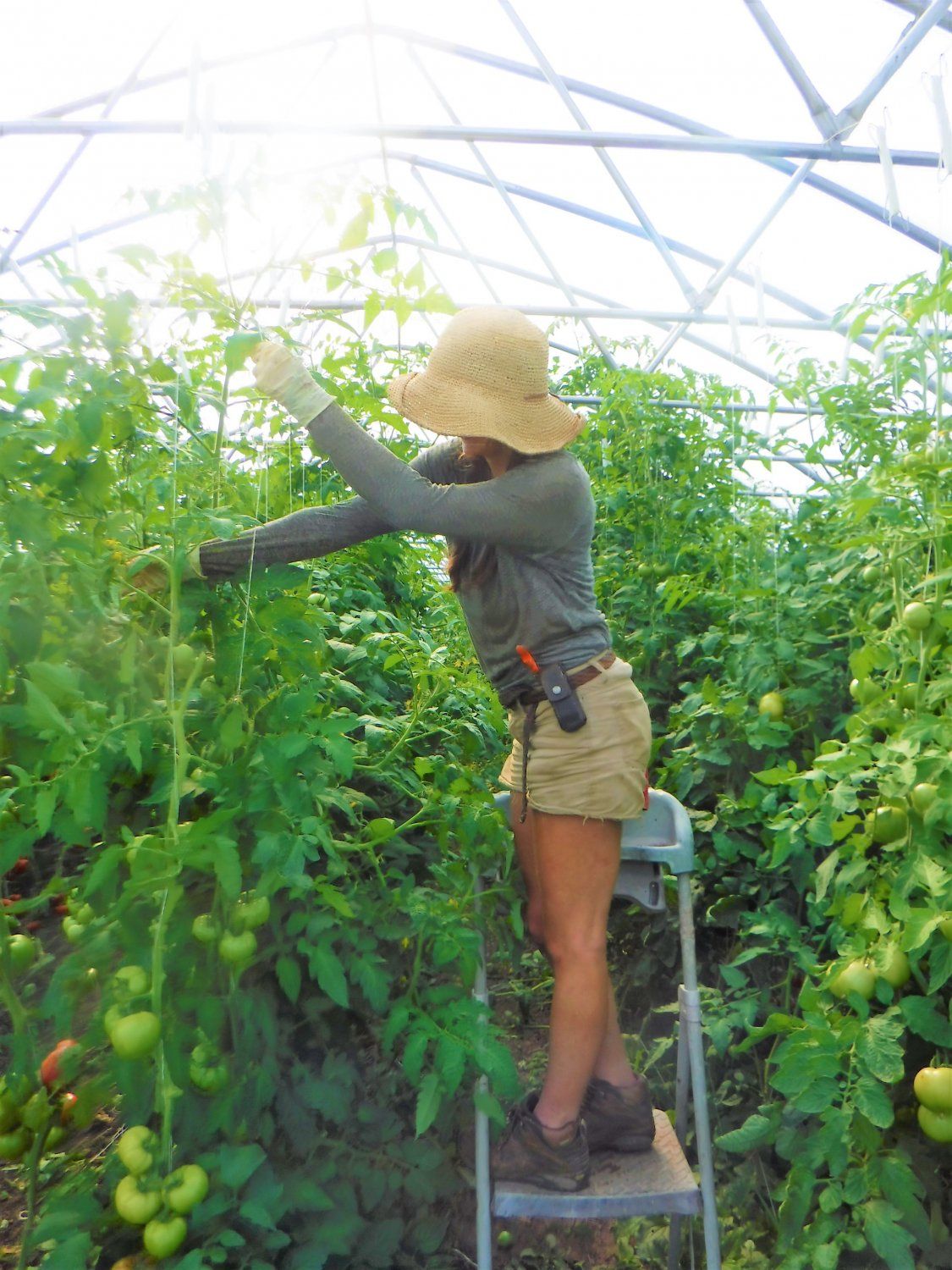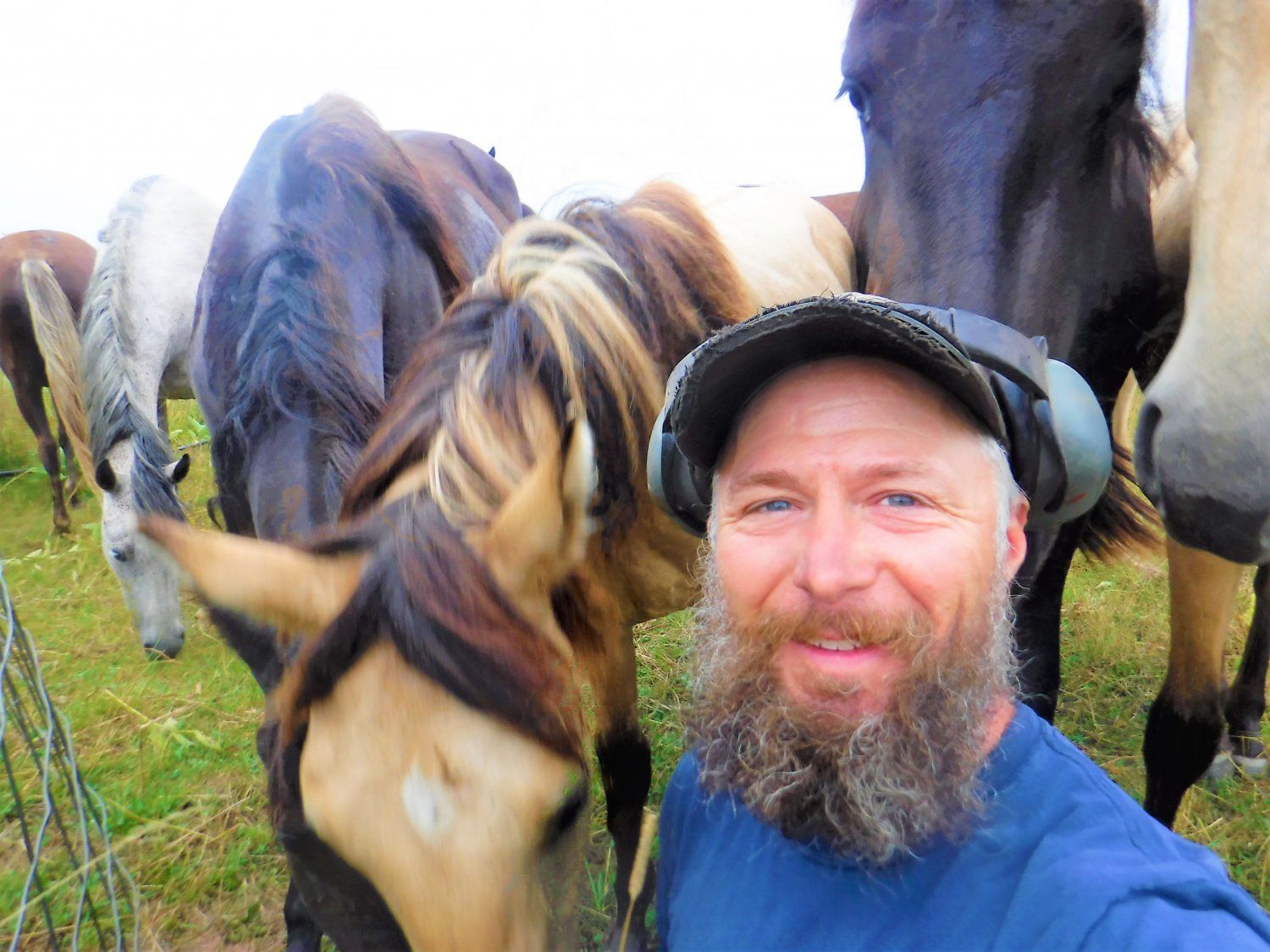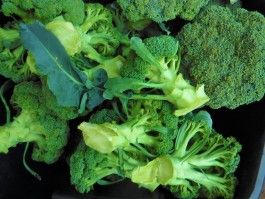The end of last week, we mowed down our early plantings of broccoli which had been harvested already. And right on schedule, the next plantings are ready to pick and looking incredible. Be sure to add some to your veggie box this week, and if you have a favorite broccoli recipe, send it our way and we can share it in the Farm Happenings next week!
What the heck happens to the time? Summer is flying by for sure. We're now about 6 weeks away from our first fall frost of the year, so that means summer crops are at their peak, and getting fields prepped for fall cover crops was our big push this week.
On Tuesday, our fall cover crop seeds arrived. It was a whopper of a pallet - over 2600# of fall cover crop seeds, including organic oats, organic Austrian winter peas (which fix nitrogen from the air into the soil and help fertilize next year's veggie crops), and 450# of organic red clover seed (another nitrogen fixing legume). A normal sized pallet weighing 2000# is a workout for our old loader to pick up out of the back of a semi, but thankfully we managed to unload the big pallet of cover crop seed with no problems. What a load!
Our new border collie puppy Hobbes is getting smarter by the day, but we still keep him close by whenever vehicles are moving around. He had just settled down for his midmorning nap when I picked him up I, and think he was less excited than I was for the cover crop seed to arrive. The rough life of a spoiled farm dog...
Here's what a handful of that clover seed looks like. It's so small (and expensive!) that we need to broadcast it by hand instead of with the tractor mounted spreader to get a proper stand, but walking the rows of corn while we broadcast the clover out is a nice way to inspect the crop and the field. "The best fertilizer is a farmer's footsteps" as the old saying goes, and I think there's some truth to that one. It's good to slow down and take a look around. Those tiny clover seeds always look like bee pollen to me. Pretty little gems, full of life.
On Thursday, we broadcast the clover seed out underneath the remaining sweet corn plantings that didn't get clover in them yet. We also seeded some clover as a trial understory cover crop in part of our winter squash field as well. It did such a great job last year under our sweet corn that we're excited to see whether we can get similar results under the squash leaf canopy.
Below you can see how our fourth and final seeding of sweet corn is growing - not too shabby!
The next picture is of Farmers Sean and Alex hand cranking that clover out among our 3rd seeding of sweet corn. Once the clover seed is spread on the ground, we rely on a rain to "set" it into the dirt and get it to sprout. Hopefully we get the rain that is expected this weekend - that would be some ideal timing.
Once the clover seed germinates, it will look like this picture below, from our 2nd seeding of sweet corn. Those little green sprouts in the dirt aren't weeds (ok, MOST of them aren't anyway!) - they are organic clover! After we spread the clover, we can't get in and cultivate any more, so we just have to sit back and let nature take its course. Sure, a few weeds will grow in the corn, but next year the clover will choke them out in the spring and take over the field.
The end result will be a field that grew us a crop AND has an established cover crop as soon as we're finished harvesting the corn. We took a look at the first planting of corn, and it's coming along nicely. Probably only about 10 more days or so until it's ready to begin harvesting. Who's excited for organic sweet corn? I sure am!
The rest of seeds that arrived - the oats and peas - will be broadcast out with the tractor next week on the fields that had rye and vetch (spring cover crops) growing in them all summer. On Thursday, Farmer Ryan spent an entire day on the tractor digging those fields up in preparation for this next round of fall cover crops to be planted. Once established, these oats and peas will grow until the cold weather kills them, and leave a thick mulch residue on the ground to protect the soil through the winter.
Sometimes I still get frustrated by the sheer amount of time and effort it takes to manage cover crops. We have SO much to do, and spending time on a crop that we won't even harvest and sell seems so counterproductive! But as organic farmers, we have to take the long view on our actions for the health of the soil. No short cuts. We have to build soil organic matter, feed soil microbes, and slowly but surely improve the soil that we farm. And cover crops are the way to make that happen.
Taking a look at the melon trials this week, we were encouraged by how good they looked. We transplanted a variety of cultivars (cantaloupes primarily) this spring, and the first fruits are beginning to size up. Some years, growing melons in our region is disappointing - if we get much rainfall during the summer, they tend to taste watery and not as sweet. This year, at least so far, has been dry dry dry, which melons love. I suppose growing some melons is a nice way to hedge your bets if the season gets droughty.
Otherwise, here at Great Oak Farm we're almost finished catching up on that tomato pruning and trellising. I sure hope you are enjoying those tomatoes! Only 6 more weeks till frost, so get your fill now before it's too late.
Below is a neat looking tomato that went out last week in your boxes. If you were the lucky one that got this turban-shaped monster, let us know how you enjoyed it!
Have a great weekend, and thanks for making us YOUR farmers!
In community,
Farmer Chris and the crew
Great Oak Farm

.JPG)
.JPG)
.JPG)
.JPG)
.JPG)
.JPG)
.JPG)
.JPG)
.JPG)



